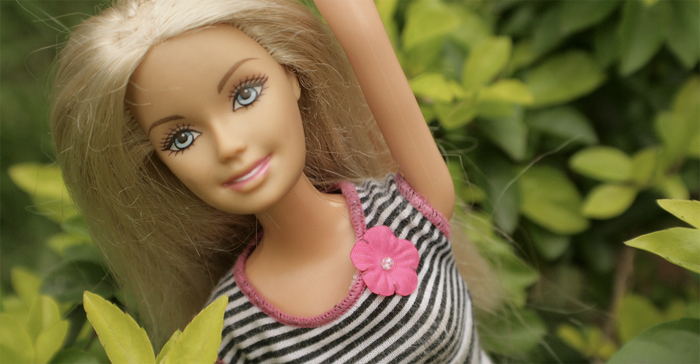The movie coming out on July 21 has created a whole new buzz around the 63-year-old plastic doll that conquered the world, but she comes with a lot of baggage. We unpack some of it here.
July 16, 2023

Attribution: https://www.flickr.com/photos/ horantheworld/6340022909/in/photolist-aEfgVP-c6Siu9-aEfvqF-aFdNCJ-m1TGkm-JkfeP-dqjkWV-kLAtLc-aF5dMb-aEoz6P-3MQim1-aF5hN5-wi67-aDLafT-aEfqAM-Gr1o-5J6h9o-Gr1p-qaoFvA-aFdEX7-aF1as6-65SaJH-ajrjVW-pST9jE-8nZ1KD-a8RwRU-bpLG3x-2j6CFs-bkFQ4j-oB1AQ-pdGjg6-4hmFVe-6txrQN-5heWHx-78ijdB-4hmFzi-Swpkx-2Kozyo-4oxNd-9u3aCZ-9u6bCL-9u6bEh-a8Rx8o-2omJWvY-2nsG93w-fsyo7-vBQ7xe-LeQywf-CjeYaK-Bu9fXzImage courtesy of Horantheworld/Flickr
Barbie was conceived in 1959 by Ruth Handler, co-founder with her husband of Mattel. According to the toymaker's website, Handler was inspired by watching her daughter Barbara playing for hours with paper dolls. (There's a bit more to the origin story, but I'll save that for later.) Handler reportedly recognized the “opportunity to champion and inspire girls by introducing a three-dimensional doll that shows them that they can be anything."
Barbie was a massive success, with 300,000 dolls sold in the first year. Since then, it is estimated that more than a billion dolls have found their way into the homes and hearts of children around the world (and not a few adults, for that matter). With the imminent release of the Barbie movie, written by indie icons Noah Baumbach and Greta Gerwig and directed by Gerwig on the heels of her delightful Ladybird, 63-year-old Barbie is still getting all kinds of attention. Admittedly, being portrayed on screen by Margot Robbie doesn’t hurt.
Barbie came on the scene at a time when plastic unabashedly rhymed with fantastic. The post-war explosion of the “miracle material” revolutionized toymaking, a fact that was duly recognized by the National Toy Hall of Fame when it was founded in 1998 and inducted Barbie and several other plastic toys in its inaugural class. Frisbee and Lego were among the other plastic-centric playthings inducted that year. Unlike those peers, however, Barbie's material makeup relies on multiple types of plastics.
The Design Life-Cycle website notes in an article published in 2013 that PVC, ethylene-vinyl acetate (EVA), acrylonitrile-butadiene-styrene (ABS), styrenic block copolymer (SBC), and polybutylene terephthalate (PBT) have been used to fabricate various body parts over the years. The article notes that Mattel is tight lipped about the manufacturing process and materials, but PlasticsToday sister brand Design News published a fairly in-depth piece on three material innovations introduced in 2000 alone that made “Barbie more attractive than ever.” Design News reported, in particular, that “new elastomers have given her a more lifelike body. Engineering thermoplastics have improved her complexion. And developmental water-based paints could soon result in a face that goes easier on the environment.“
More recently in 2021, Mattel introduced the Barbie Loves the Ocean collection — three dolls made of recycled ocean-bound plastic waste.
Swipe through these slides for a few more fun facts about the plastic doll from El Segundo, CA, that conquered the world, starting with her tangled roots.
About the Author(s)
You May Also Like




